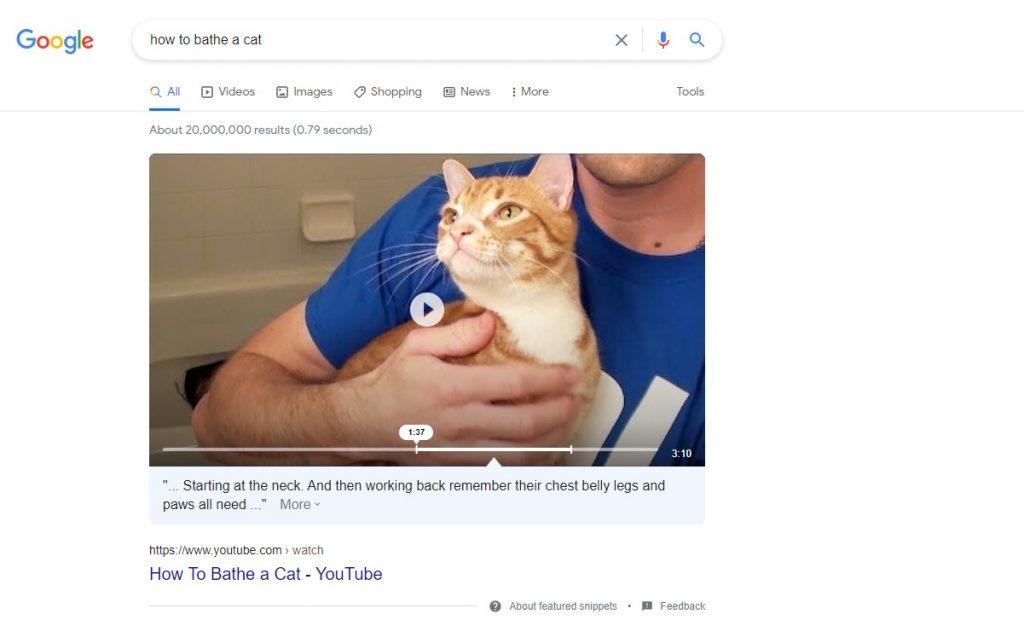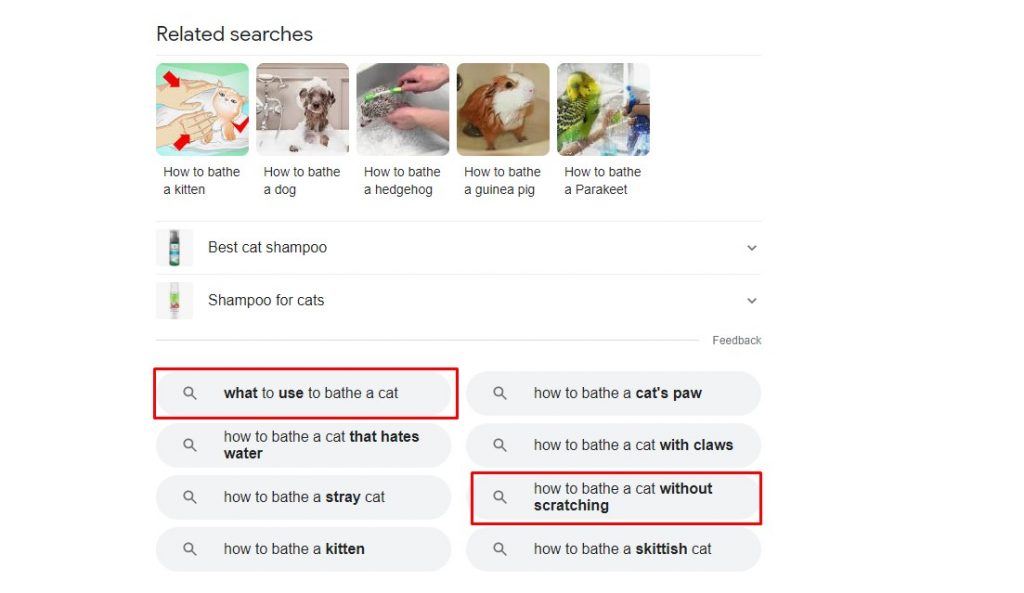Google’s MUM: The Future Is Here And SEOs Can’t Prepare For It
13 July 2021 Leave a comment ALL-HANDS SEO
Google keeps telling us to care about users, not search engines.
Yet, many of us don’t follow this advice.
We often try to outsmart Google’s algorithm and obtain good rankings without all the hard work, even if it takes using dangerous black-hat SEO techniques to achieve that.
And for everyone brave enough to judge us, we have an excuse.
We cheat because making websites user-friendly and ranking them naturally is time-consuming and expensive. Many of our clients are impatient and want immediate results for less money. When you try to explain that it often takes months of hard work to improve website visibility, they ask for a refund and write a negative review about your company.
So we have only two options: either give up on such customers or give them what they want.
And money often wins.
We bet most SEO agencies can relate to that, and the majority of you have used unethical SEO tactics at least once in your career.
However, you should agree that obtaining good rankings with black-hat techniques becomes nearly impossible as days go by.
After each update, Google gets more sophisticated, rendering all the tricky tactics useless.
Some time ago, you could buy hundreds of cheap backlinks to increase your website’s authority and rank better. The search giant addressed the issue in its Penguin update, so now, buying backlinks is dangerous and ineffective (it can only lead to a penalty).
Just ten years ago, you could stuff your pages with a bunch of keywords and even rank those pages well. Then, the Panda update kicked in, penalizing spammy websites with poor content.
Google constantly fights black-hat SEO techniques, punishing those who don’t play fair. And if you still think there will always be a way to outwit its algorithm, you’ll change your mind after reading this article.
In the following paragraphs, we discuss Google’s brand-new technology — MUM. We believe it has the potential to change SEO, and this blog post will prove our point.
You’ll learn:
- What is MUM, and what’s its purpose
- Why SEO experts are afraid of Google’s MUM
- How MUM will change search engine optimization
- Why you should start focusing on user experience already
MUM is an acronym for Multitask Unified Model. It’s Google’s new technology designed to provide answers to complex questions. It’s still in beta: MUM-powered features and improvements will be rolling out in the following months and years.
To understand how the technology will work, we first need to look at the way the search engine operates today.
When you type some query into the search bar, Google provides relevant information for that query. For example, if you google “how to bathe a cat,” the search engine will display a featured snippet with the video of the bathing process along with other relevant organic results.
But what if the content Google offers for this keyword doesn’t answer all of your questions?
Let’s say you want to know how to save yourself from scratches, what shampoo to use, how often you should bathe a cat, what temperature the water should be, and why cats are afraid of water.
To find additional info relevant to the cat bathing topic, you would have to take several considered searches.
You can scroll the page down to the Related searches section and use it to modify your initial keyword and initiate a new search session.
You can also go to the People also ask section and try to find answers there.
Or you can simply google each question, initiating five different searches.
Eventually, after some research, you will find what you need.
Today, the search engine surfaces results relevant to a keyword, not to an entire topic the keyword is tied to. Thus, it often requires a lot of friction and time to find what you’re interested in. According to Google, it usually takes eight different searches to receive complete information on some complicated topic.
To simplify searchers’ lives and improve their experience, the search giant introduced MUM.
With the new technology, Google will be able to provide multiple insights on a subject within one search result. Therefore, it will take a user less effort to get comprehensive information in the future.
Once MUM is rolled out, you can search for something as simple as “how to bathe a cat” and find an answer to every related question you have in mind.
MUM will gather all the information relevant to the topic (not only to the “how to bathe a cat” keyword), enabling you to gain complete knowledge of the subject matter without starting new search sessions.
As Google states, the Multitask Unified Model is a thousand times more powerful than its predecessor — BERT. It’s trained across 75 languages and not only understands language but generates it.
For example, Google could find an article on bathing a cat from a French veterinarian and translate it to you so that you can gain expert knowledge.
In addition to the above, MUM is multimodal, meaning it can understand not only texts but also images (and has the potential to understand information across audios and videos in the future). For example, you might take a picture of a shampoo bottle, send it to Google asking, “can I bathe a cat with this shampoo,” and the search engine will provide the answer.
Of course, while giving you comprehensive info, Google won’t forget to credit websites it will take information from.
“MUM could also surface helpful subtopics for deeper exploration… with pointers to helpful articles, videos, and images from across the web.”
Thus, your website may appear in MUM-based results, bringing you traffic.
However, no one yet has an idea of how MUM-based search results will look like, and that uncertainty terrifies SEO experts more than any horror movie.
“The oldest and strongest emotion of mankind is fear, and the oldest and strongest kind of fear is fear of the unknown” H.P. Lovecraft.
In our case, the unknown — is Google’s MUM.
We’re scared of the uncertainty and possible negative impact the update may cause.
Google may roll MUM out as a snippet at the top of the results page or completely redesign its SERP, so all results in it will be MUM-based. And if all results are powered by MUM, what will happen to regular organic snippets?
Since we don’t know what form Google’s MUM may take, we also have no clue what we can do to optimize for the update.
To add more fuel to the fire, we will be unable to monitor website positions the way we do it now.
Let’s face it — we’re used to things as they are today. We optimize our websites, track rankings, make some changes, monitor rankings again, and repeat. Checking keyword positions gives us a sense of whether the SEO strategies we’re using bring us any value.
But how are we supposed to track rankings when MUM is rolled out?
If MUM completely changes SERP for most informational queries, rank tracking (at least as it is today) will become obsolete for many of us.
In addition to that, we may experience significant traffic changes once the technology is up and running.
Let us explain.
Suppose your website ranks third for the “how often should you bathe a cat” keyword. This article brings you decent traffic: people who search for “how to bathe a cat” often run new search sessions with the “how often should you bathe a cat” query and stumble across your site.
However, once MUM features are available, your traffic may decrease.
That may happen because users will no longer need to search specifically for the “how often should you bathe a cat” keyword. In other words, they won’t have to initiate another search session — they might just search for “how to bathe a cat” and get all related information in MUM-based results. And unless your article appears there, you’ll lose.
That’s why Google’s MUM gives SEO experts shivers and causes nightmares.
And even though there’s very little information on the new technology available now, we already have enough reasons to assume it will completely change SEO.
So what to expect from Google’s MUM?
The first thing that comes to our mind is more competition.
Fierce competition
Now we mostly compete with websites that produce content in the same language as us.
However, as we learned a few paragraphs ago, MUM can understand information across 75 languages and surface it to users, no matter what language they typed their query in. Consequently, it’s safe to assume that once MUM features are up and running, the language barrier will be erased, and we’ll be involved in a fierce international competition.
It won’t be enough to analyze competitors that create content in the same language as you anymore — you will have to peek at your multinational rivals as well, ensuring your content is much better than theirs. Only then can you expect to prosper in the world of Google’s MUM domination.
Given that there will be no language barrier, you will probably have to localize your content, translating it to multiple languages.
More people will start localizing their websites
MUM snippets will have links to websites in different languages, so we can expect more website owners to localize their sites.
Let us explain.
Suppose you sell cat shampoos and ship them worldwide. You have a blog post on what shampoo to use when bathing a cat. It’s available only in English.
After some time, this blog post appears in a MUM-based result for an Italian keyword because Google decided that your article is more valuable and has more expertise than those coming from Italian sources.
As a result, you see a splash in traffic coming from Italy in your Google Analytics account.
Now let’s think about those Italian visitors for a moment. What user experience do they get? Some of them don’t speak English, so they can’t understand your content. They will likely leave your website immediately and never come back again. Therefore, you’ll lose your potential customers.
That’s definitely not what you want. Instead, you should improve user experience by localizing your website for Italian users. That will also help you convert more.
So our point is, once MUM snippets are rolled out and the language barrier is erased, you’ll never know where your website may appear. And if you target a global audience, it’s a good idea to ensure your website supports the languages of your target countries.
If you decide to translate your site into several languages, don’t forget to set up a geolocation redirect to send users on the right version of your website based on their current location.
From a user’s perspective, MUM is an incredible technology that will help us find relevant information faster and with less friction.
Yet, when it comes to SEO, the upcoming update is a total disaster.
Since we don’t know how Google will present MUM-based results, there’s no way we can get ready for the future update. And since we can’t do anything to prepare our sites, we feel things getting out of our control, making us insecure.
At this point, it’s clear that the optimization strategies we use today (including unethical ones) may not work once Google’s MUM is rolled out. It’s clear that the SEO industry as we know it may change forever, and there won’t be any tricky ways left to obtain good rankings fast. It’s clear that instead of trying to outsmart the algorithm, we will have to work hard, producing high-quality content and improving our sites to provide a good user experience.
Only then can we survive once Google’s MUM is in charge.
So maybe this time we should listen to Google and already start caring about users instead of search engines?
Tags: Core Update, Google MUM, Google Updates, RankActive, SEO
Like this article? There’s more where that came from.
- 5 Questions to Ask Yourself Before Paying for Rank Tracking Software
- 5 Serious Mistakes Beginner SEOs Make and How to Fix Them
- Why We Use Google’s New Link Attributes and You Should Too
- Title and Description in 2021: Why Google Rewrites SEOs’ Meta Tags
- What We Should Learn From Google’s “About This Result” Feature





